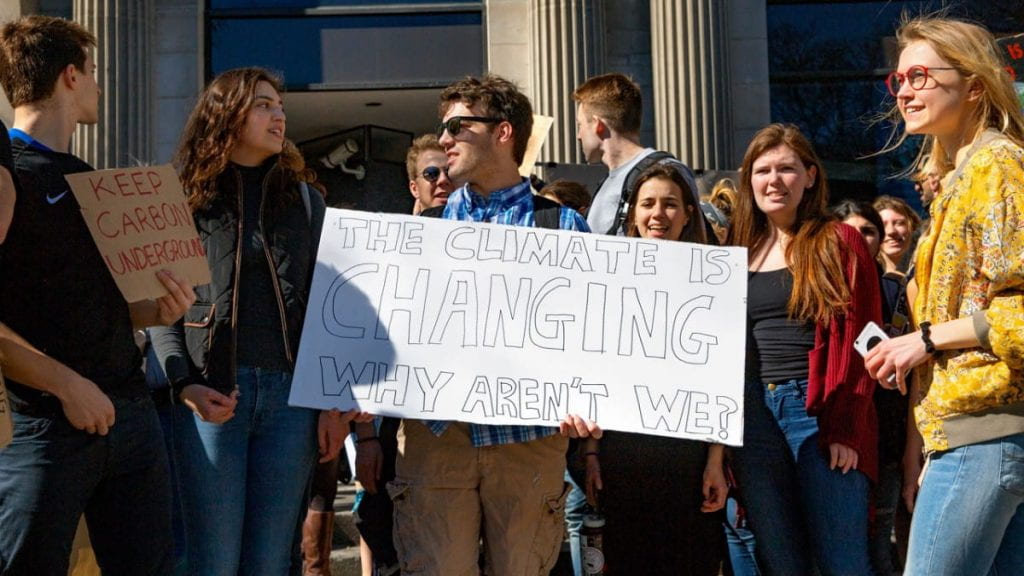Overview
This activity will introduce Climate Resiliency and how local and global communities are preparing for the future.
Skill Level
Intermediate/Advanced
Learner Outcomes, Youth will:
- Apply existing knowledge about how climate change and its effects on communities.
- Use web-based resources to research and identify methods of climate resiliency practices.
- Reflect on the stories of others in climate sensitive environments.
- Perform role play to understand roles and responsibilities of communities planning for climate resiliency.
Education Standards
- NS.5-8.6 Personal and Social Perspectives: Personal health, resources, and environments, Natural hazards, Risks and benefits
- NS.9-12.6 Personal and Social Perspectives: Personal and community health, Natural resources, Environmental quality, Natural and human-induced hazards
- HS-ETS1-3. Evaluate a solution to a complex real-world problem and environmental impacts.
- HS-ESS3-1. Construct an explanation based on evidence for how the availability of natural resources, occurrence of natural hazards, and changes in climate have influenced human activity.
Success Indicators
Demonstrate how they and others embrace and adapt to climate change.
Life Skills
Civic engagement, resiliency, critical thinking, problem solving, responsibility

Time Needed
45 Minutes
Materials List: Devices with Internet access to watch videos (listed in “Let’s Do It!) for research; newsprint or sketch pads, colored markers, pens, pencils.
Space
Appropriate space and technology to view videos and space for youth to perform role-playing.
Suggested Group Size
15-20 or more
Introduction
Actions to address climate change may be a result of destruction and displacement from unexpected extreme weather events. Communities are taking action to plan for such future catastrophic events. This activity will introduce Climate Resiliency and how local and global communities are preparing for the future. Climate Resiliency, defined as the power for communities to understand stresses that occur as a result of a climate change event, and how they cultivate a plan to be better prepared, to adapt, reorganize, for increased sustainability for the future. Later on, in Unit 4, your group will have the opportunity to dive deeper into finding and brainstorming solutions that help prepare for climate change impacts and will work together to develop a comprehensive plan for Climate Resiliency.
Opening Questions: In what ways are people and living things affected by extreme weather-related events (flooding, hurricanes, etc.)? What are important roles of people in communities that will need to be part of the emergency planning process?
Background Information
Before the Activity
Prepare materials, technical devices and handouts; provide or suggest devices (mobile phone, tablet, laptop) with Internet access and video capability. Participants may provide their own or use a computer lab at school or in the library; Review introductory videos.
Let’s Do It!
People Taking Action
- Unless you have a meeting space to view videos as a group, have participants view these short videos before you meet to do this activity.
- Explain to youth that they will be watching a series of videos and researching websites showing people taking action and developing plans for climate resiliency. Ask opening questions.
- Adapt: The Key to Climate Resilience: This video highlights Climate Smart Communities (CSC) certification program’s action to “develop climate adaptation strategies.
- Virginia environmental conservation organization is teaching local school children from Grandby High School, climate resilience strategies to live with rising waters
- Cornell University New York State Water Resources Institute,
- The Hudson River Estuary Program
- Planning a Resilient New York City
- Eight Ways Cities are Building Climate Resiliency,
- Explain that later on in the program, your group will be coming up with a Plan for Resiliency they can do in their own communities. Ask: What in these videos inspired you? Who inspired you, and why? Are you and others you know inspired to take action in a similar way? What might that look like? How might you bring your strengths and skills to the table, when helping your community plan for resiliency.
- Have youth work in small groups to sketch comic strips that explores way to solve the problem and illustrates the path needed to create a plan for resiliency: What is the environmental issue/problem? Policy or practice to be changed? What is the goal: (We want _____ to _____ , which will result in _____.) How will we do this: strategy: (In order to achieve this, we will _____.)
Talk It Over
Share
Have groups share their comic strips and explain why they chose to explore this problem.
Reflect
Reflecting on what you’ve watched, and imagining your way into creating your own video to inspire others, what and who would you feature?
Generalize
Think about a video you will create- what would be the look and feel of your video?
Apply
Take Action! How do you see yourself taking action in the same way the leaders in your community are? What ways can you continue showing others in your community how to take action? What are some actions you will take today to mitigate climate change? Continue the discussion and take action for Climate Resiliency by developing an Action Plan, which you will find in the Until Four activities.
References
- Cornell University New York State Water Resources Institute, Sea-level Rise: Planning Coastal Development
- International Institute for Sustainable Development, Eight Ways Cities are Building Climate Resiliency
- NewsHour Shares
- Planning a Resilient New York City
Learn More
- Cornell Garden-Based Learning
- Food Span: Lessons of our Food System, includes a final project where students develop a Food Citizen Action Plan
- Our Climate Our Future: find stories about how youth across the country have been affected by climate change and climate solutions made by and for young people.
- The Alliance for Climate Education: covers the science of climate change and how youth can take action.
- W!ld Center Youth Climate Summit: Offers an annual Youth Climate Summit for local high school and higher education students.
- U.S. Climate Resiliency ToolKit


